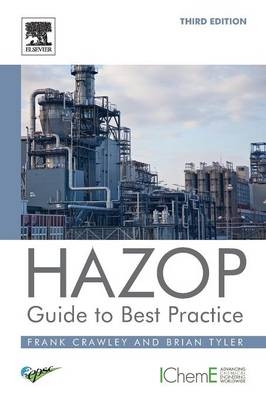
HAZOP: Guide to Best Practice
Elsevier - Health Sciences Division (Verlag)
978-0-323-39460-4 (ISBN)
This book explains how to implement HAZOP techniques in new facilities and apply it to existing facilities. The content covers many of the possible applications of HAZOP and takes you through all the stages of a study. This simple, easily digestible book is a favorite in the chemical and process industries.
Charter Chemical Engineer. 7 Years of experience in Production, Commissioning and Start Up of Olefine Plants (1963 – 70). 10 years of special duties on Nylon Intermediates much as the result of the Flixborough Explosion under the tutelage of the late Trevor Kletz (1970 – 81). 10 years of leading the Loss Prevention group in an oil major (1981- 91). Over 10 years consultancy in the offshore oil industry and over 15 years (part time) in Academe (Chem Eng). Over 50 refereed technical papers under IChemE and others. IChemE Franklin Medal for teaching safety at under and post graduate levels and co-awardee of the IChemE Brennan Medal for the book “HAZOP Guide to Best Practice (Edition 1). Co-author of the IChemE books: HAZOP: Guide to Best Practice and Hazard Identification Methods (Edition 1) with Brian Tyler. Brian Tyler established his consulting company with his colleague Bob Simmons in 1990. At that time he was also on the staff of the chemistry department at the University of Manchester Institute of Science and Technology (UMIST). His research work at that time focused on the areas of fire, explosion, self-heating and kinetics, including work on industrially related problems. By 1990 he had over 20 years’ experience of organising meetings and courses under the general heading ‘Safety in the Chemical Industry’. These included HAZOP and HAZAN, Fire and Explosion, Accident Investigation, Gas Dispersion and many others. His course “HAZOP study for team leaders and team members" is still run by the IChemE under the leadership of Phil Aspinall. Another major activity has been the authorship to two IChemE monographs. The first, written with Frank Crawley and Malcolm Preston, is ‘HAZOP, Guide to Best Practice’; the second with Frank Crawley is ‘Hazard Identification Methods’. In 2011 he was one of the first group elected to the newly established class of Associate Fellow of the Institution of Chemical Engineers.Physical chemist. Cambridge University and UMIST. Research into gas phase processes and explosions including self-heating of solids and gases. Organiser of the Safety in the Chemical Industry postgraduate courses held at UMIST from 1969 to 1990, especially covering HAZOP and HAZAN. With S&T Consultants from 1990-2015 delivering training courses on HAZOP and other safety methods within the UK and overseas. Co-author of the IChemE books: HAZOP: Guide to best practice and Hazard Identification Methods.
1. Introduction 2. Process hazard studies3. The HAZOP study method4. The detailed HAZOP study procedure5. Organizing a HAZOP study 6. Carrying out a study7. Recording 8. Training 9. Company procedures for HAZOP study 10. HAZOP study of computer-controlled processes11. Specific applications of HAZOP 12. Factors for a successful HAZOP study
| Erscheint lt. Verlag | 21.4.2015 |
|---|---|
| Verlagsort | Philadelphia |
| Sprache | englisch |
| Maße | 152 x 229 mm |
| Gewicht | 290 g |
| Themenwelt | Technik ► Elektrotechnik / Energietechnik |
| Technik ► Umwelttechnik / Biotechnologie | |
| Wirtschaft | |
| ISBN-10 | 0-323-39460-4 / 0323394604 |
| ISBN-13 | 978-0-323-39460-4 / 9780323394604 |
| Zustand | Neuware |
| Haben Sie eine Frage zum Produkt? |
aus dem Bereich


